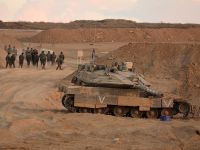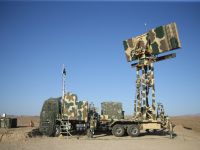iran economic & strategic outlook gdp and public finance
Global Investment House- Kuwait – Iran Economic & Strategic Outlook – GDP and Public Finance.
Gross Domestic Profit
The improvement in the overall economic situation of Iran is a direct result of the government’s introduction of the First, Second, Third, and Fourth Socio-Economic and Cultural Development Five-Year Plans. In the years following the revolution in Iran in 1979, the government embarked on an economic correction path. With the help of IMF staff, the government introduced plans that aimed at improving its fiscal, monetary, exchange rates, and financial sector policies. These structural reforms focused on ambitious privatization programs where the government has a target of privatizing 20% of state-owned firms annually. This was also accompanied by reforms aimed at streamlining the administrative burden, ensuring a level-playing field for private sector, and improving business environment.
The Iranian economy, as indicated by the GDP, grew by 4.4% in 2005/06 to reach IR421,981bn in real terms. During the period of 2002/03-2005/06, GDP grew at a CAGR of 5.51%. Consumption expenditure increased by 6.4% in the fiscal year 2005/06. Throughout the 2002/03-2005/06 period, expenditure by the private sector maintained a constant share of 83.4% of total expenditure, and grew at a CAGR of 6.8% during the same period. Expenditure by the public sector comprised an average of 16.6% of total expenditure throughout the same period, and grew at a CAGR of 2.4%. Gross fixed capital formation, an indicator of total investments increased by 5.8% in 2005/06, a CAGR of 7.8% during the period 2002/03 - 2005/06 to reach IR152,741bn in 2005/06.
Net exports increased by 13.2% in 2005/06 due to a significant increase in oil and non-oil exports, and a slight increase in imports. During the period of 2002/03-2005/06 net exports increased at a CAGR of 70.2%, and comprised 5.2% of total GDP to reach IR22,035bn in 2005/06 while it stood at IR25,376bn which translates into 6.3% of GDP in 2004/05.
The country’s GDP distribution indicates a diversified economy in Iran with the highest contribution from the services sector. The structure of Iran’s economy continues to be reliant on oil as the main source of hard currency. Oil’s share of GDP has declined in 2005/06 to 11% of total GDP from 11.5% in 2004/05, and over the period 2002/03 to 2005/06, it achieved a CAGR of 5.4% which is the second lowest after the construction sector. This reduction was due government efforts to diversify the production base, as well as the lack of investments in the oil sector infrastructure. However, oil revenue still provides 81.4% of exports earnings and contributes 11% of total GDP in 2005/06. Growth rates in the oil sector have been significantly influenced by changes in the price of oil and the level of production as Iran conforms to revised OPEC quotas from time to time.
The services sector has grown by 5.6% in 2005/06 to reach IR215,969bn. It maintained relatively the same percentage of contribution to total GDP of around 50% over the period of 2002/03 to 2005/06, making the services sector the largest in the Iranian economy. However, it grew at a modest CAGR of 4.9% over the mentioned period, indicating that the economy in Iran is slowly moving away from being a “Services-based economy” into an industrialized economy. This also indicates that the manufacturing and the industrial sectors are the biggest gainers in terms of growth throughout the period.
The industrial and mining sector grew at a year on year growth rate of 6.7% in 2005/06, and a CAGR of 7.6% during 2002/03 to 2005/06 to reach IR103,975bn. While the manufacturing sector grew at a year on year rate of 7.2% in 2005/06, while its compounded growth rate over the period 2002/03-2005/06 was at 9.7%, the highest of all sectors, to reach IR80,328bn. Both the industrial and mining sector and the manufacturing sector maintained a relatively constant share of GDP in 2004/05 and 2005/06 of 24.5% and 19% respectively. The industrial production in Iran is experiencing high levels in many years. As per the “Iran Daily”, Iran is considered the world’s fourth largest dam builder. The also have the capacity to build power plants, roads, railways, giant silos, petrochemical and oil facilities, and they can also produce sophisticated electronic equipment.
During the period of 2002/03 to 2005/06, the oil sector grew at a CAGR of 5.4%. However in 2005/06, the oil sector only expanded by 0.6%. Although the oil sector plays a pivotal role in the formation of the Iranian economy, the shy rate of growth in 2005/06 was a result of a number of factors, mainly the decline in Iran’s oil storage capacity, the restrictions on foreign investments in the oil sector, the lack of refining capabilities to meet domestic needs for gasoline and other refined products. It is necessary to mention, however, that the government has taken the initiative in addressing the problems associated with the oil industry. These reforms introduced by the government will have significant effects on Iran’s oil production capacity. Such reform plans include the privatization of Iran’s state owned oil assets, exchange rate flexibility, deregulating foreign trade procedures, the establishment of the oil stabilization fund, the expansion of Iran’s refinery infrastructure, and reducing the use of gasoline through rationing, price controls, and the shift to non-petroleum products.
Agriculture in Iran remains an essential part of its economic welfare. It’s percentage contribution to 2005/06 GDP reached 13.7% with a year on year growth rate of 7.1%, second highest growth rate after manufacturing which stood at 7.2%. During the period 2002/03 – 2005/06, the agricultural sector grew at a CAGR of 5.4% to reach IR58,391bn.
Public Finance
Iran’s fiscal stance proved to be highly expansionary in 2005/06. The government has set a target in 2005/06 to decrease the fiscal deficit by raising revenues and stabilizing expenditures. However, the government passed laws to cover high gas imports and food subsidies, also to bring teacher’s salaries to the same level as other public servants.
As a result, government expenditure increased in the fiscal year 2005/06 to form 35.3% of GDP, while revenues amounted to 27.6%. Expenditure in 2005/06 reached IR597,759bn, an increase of 57.3% over the previous year’s figure. Government revenues, on the other hand, increased by 85.7% in the same year to reach IR467,250bn. During the fiscal years 2002/03 to 2005/06 government revenues achieved a CAGR of 96.1%, due to an increase of 98.9% in oil and non-oil revenues and an increase of 59.4% in tax revenues.
The proceeds from the disposal of non financial assets increased by 23.7% due to an increase in oil revenue (including sale of crude oil and oil products, and export of crude oil in exchange of gasoline) to reach IR186,342.4bn in 2005/06. Needless to mention that the increase in oil prices in recent years also contributed to the increase in revenues, despite the restrictions on Iranian oil imports by the international community, and the below capacity oil extraction due to the lack of resources and technical know-how. Returns from disposal of financial assets in 2005/06 contributed 4.9% of GDP to stand at IR83,380.8bn. Disposal of financial assets include returns from sale of participation papers (central bank bonds complying with Islamic shariaa), foreign borrowings, withdrawal of the Oil Stabilization Fund (OSF), privatization revenues, and returns from the previous year among others. Returns from previous year’s financial assets increased by an enormous 140.7% in 2005/06 and achieved a CAGR of 58.1% during the period 2001/02 to 2005/06 to reach IR3,073bn. The Iranian government budgeted an increase on previous year’s financial assets to increase to IR5,300bn in 2006/07. The Iranian government increased its foreign borrowings in 2005/06 to reach IR622.1bn, an increase of 119.4%. The OSF was established in order to collect windfall oil income for infrastructural investment and to ensure budget stability, should oil prices fall. Withdrawal from the OSF increased by 8.8% in 2005/06 to reach IR69,383.4bn, a CAGR of 9.6% during the four-year period of 2002/03 to 2005/06. Revenues generated from the sale of Central Bank Participation Papers (CBPPs) decreased by 44.6% in 2005/06 to stand at IR6,834.9bn. Government efforts towards privatization were initiated in late 1980’s, and then reinvigorated in late 1990’s. However, complicated regulatory and legal structures prevented an effective implementation of the program. Revenues from privatization have been on the decline where it decreased by 36.5% in 2005/06, and declined at a compounded rate of 40.2% during the period 2002/03 to 2005/06.
Tax revenues increased by 59.4% in 2005/06 to reach IR134,574.4bn and achieved a CAGR of 38.6% during the 2002/03 to 2005/06 period. Tax revenues contribution to total revenues in 2005/06 amounted to 28.8%, and it is comprised of direct and indirect taxes. Direct taxes include corporate taxes, income taxes and wealth taxes. At 13.8%, corporate taxes contribute the most of total revenues, while wealth taxes and income taxes contributions stood at 0.9% and 3.3% respectively for 2005/06. Indirect taxes contributed in 10.8% to the government revenues in 2005/06, slightly lower than that of the direct taxes. Indirect taxes are mainly comprised of import tax and tax on goods and services. Tax on goods and services increased in 2005/06 by 54.6% while import taxes increased by a modest 8.7%. Regarding the contribution to total government revenues, import taxes’ share of total revenues amounts to 7.7% while that of taxes on goods and services stood at 3.1%.
It is essential that the government takes steps to strengthen the tax administration and its control over taxpayers. The government should also seek the introduction of the Value Added Tax (VAT) from the parliament in the coming year, as VAT offers a stable and flexible income to governments. It widens the taxation system, bolsters investment and production, makes economic transactions and activities transparent, and facilitates the implementation of other types of taxes.
Due to the strong performance of direct taxes, a further increase in current and capital outlays, strong increase in non-oil revenues, we believe that the fiscal expansion in Iran will continue in 2007/08. However, we believe that the biggest challenge for the Iranian government in order to bring the fiscal deficit in line with its projected estimates is to decrease the state subsidies currently in effect. This would improve the overall fiscal position, and will make room for social spending, and additional resources for initiating projects that would improve the employment situation in Iran.







